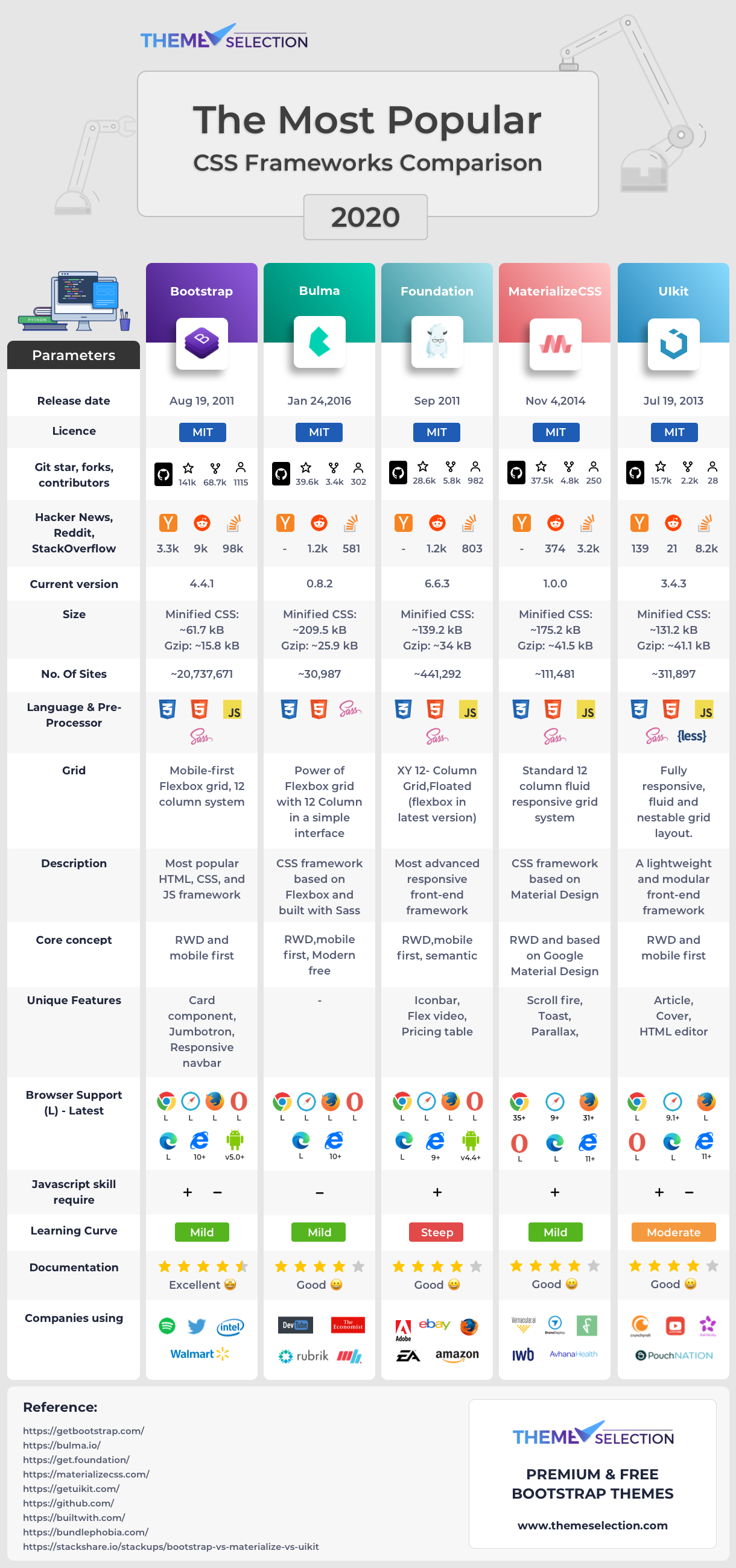Index Surge: Amplifying Your Insights
Stay updated with the latest trends and news across various industries.
Frameworks that Make CSS a Breeze
Discover top CSS frameworks that simplify styling. Transform your web design process and boost productivity with ease!
Top 5 CSS Frameworks to Simplify Your Styling Process
When it comes to web development, CSS frameworks can significantly streamline your styling process, allowing you to focus more on functionality and design. In this article, we will explore the top 5 CSS frameworks that can enhance your productivity and simplify your workflow. These frameworks come equipped with pre-designed CSS classes and components that enable developers to create responsive layouts with ease. Let's dive into the details of each framework.
- Bootstrap: One of the most popular CSS frameworks, Bootstrap offers a comprehensive set of tools for creating mobile-first designs. With its grid system and extensive library of components, Bootstrap allows for quick styling without sacrificing flexibility.
- Foundation: Developed by ZURB, Foundation is another robust framework that emphasizes customizability. It provides a set of responsive components and works seamlessly across devices.
- Bulma: Bulma is a modern CSS framework based on Flexbox. Its simple syntax and modular approach make it easy for beginners to use, yet powerful enough for experienced developers.
- Tailwind CSS: Unlike traditional frameworks that come with pre-defined components, Tailwind CSS focuses on utility-first classes, giving you more control over your design.
- Semantic UI: Semantic UI uses human-friendly HTML to create responsive layouts, enhancing the readability of your code while providing a unique set of design components.

How CSS Frameworks Enhance Development Efficiency
CSS frameworks, such as Bootstrap and Foundation, provide developers with a structured approach to styling web applications. By offering a set of pre-designed components and a consistent grid system, these frameworks streamline the development process. This efficiency is especially notable when it comes to responsive design, allowing developers to create mobile-friendly layouts without the need for extensive media queries. As a result, developers can spend less time on repetitive CSS work and focus more on the unique aspects of their projects.
Additionally, the modular nature of CSS frameworks promotes reusability and collaboration among team members. With well-defined classes and components, developers can easily share styles and components across different projects, leading to quicker iterations and reduced code duplication. The use of consistent design patterns not only enhances productivity but also ensures a uniform user experience, ultimately contributing to improved site performance and maintainability.
Are CSS Frameworks Worth It? Pros and Cons Explained
When considering whether CSS frameworks are worth it, it's essential to weigh the pros and cons. On the positive side, CSS frameworks like Bootstrap and Tailwind CSS can significantly speed up the development process. They offer a collection of pre-designed components and grid systems that can help developers create responsive and visually appealing websites with ease. Additionally, these frameworks often come with built-in styling and JavaScript functions, which means less time spent on writing custom code and troubleshooting compatibility issues.
However, there are also some cons to using CSS frameworks. One notable drawback is the learning curve; developers need to familiarize themselves with the framework's classes and conventions, which can take time. Furthermore, frameworks may introduce unnecessary bloat into the website's code, slowing down loading times. Finally, reliance on a framework can lead to a lack of uniqueness in design, as many developers might end up using the same styling elements, making their projects look somewhat generic.